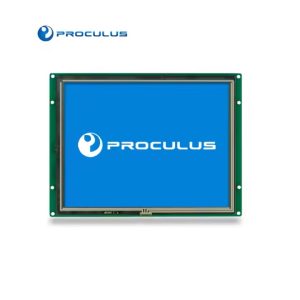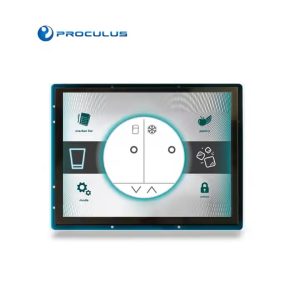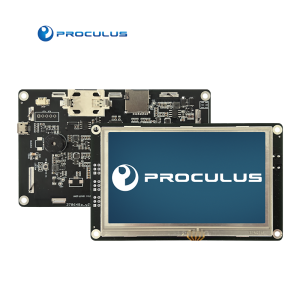Advantages and Applications of Small LCD Displays
In the world of modern technology, size doesn’t always matter. Small LCD displays, often overlooked, pack a punch when it comes to versatility and utility. Brands like Proculus have been leading the charge in the realm of small displays, offering a wide range of applications and advantages. In this blog, we’ll explore the benefits and diverse applications of small LCD displays, with a particular focus on Proculus’s offerings.
The Power of Compactness – Advantages of Small LCD Displays
Small LCD displays, sometimes referred to as mini displays, have carved out a niche of their own in the tech world. Here’s why they are gaining popularity:
-
Space Efficiency: Small LCD displays are designed with limited space in mind. Their compact form factor makes them ideal for devices where size is a constraint. They allow manufacturers to create sleek and slim gadgets without compromising on screen functionality.
-
Energy-Efficient: Due to their size, small LCD displays consume less power compared to larger counterparts. This energy efficiency is a significant advantage, especially in portable devices that rely on battery power.
-
Cost-Effective: Manufacturing small LCD displays tends to be more cost-effective, making them a practical choice for products where cost sensitivity is a concern.
-
Durability: Many small LCD displays are built to withstand tough environments. This durability is crucial in applications such as industrial equipment and outdoor displays, where the screen may be exposed to dust, moisture, or physical stress.
-
Customization: Manufacturers can design small LCD displays to meet specific requirements, including size, resolution, and interface options, providing flexibility for various applications.

Applications of Small LCD Displays in Consumer Electronics
Small LCD displays such as the 4.3 inch TFT display are everywhere, from your pocket to your living room. Proculus, a leading brand in the field, offers a wide array of small LCD displays tailored for consumer electronics applications, including:
-
Smartwatches: The small, high-resolution screens found in smartwatches allow users to access notifications, fitness data, and more, all from their wrists.
-
Digital Cameras: Compact digital cameras often feature small LCD displays for framing shots, reviewing images, and navigating settings.
-
Portable Gaming Devices: Handheld gaming consoles rely on small LCD displays for immersive gameplay and enhanced graphics.
-
Remote Controls: Many remote controls now incorporate small LCD screens to display menu options and contextual information.
-
Fitness Trackers: Fitness bands and trackers use small displays to provide real-time health and activity data to users.
Industrial and Commercial Applications of Small LCD Displays
Beyond consumer electronics, this kind of wholesale TFT monitor find their place in a wide range of industrial and commercial applications, thanks to their adaptability and reliability:
-
Medical Devices: Small LCD displays are crucial in various medical devices, such as patient monitors, infusion pumps, and handheld diagnostic tools, where accurate data visualization is paramount.
-
Automotive Displays: In-car displays for navigation, entertainment, and vehicle information systems often utilize small LCD screens to provide drivers with essential information without obstructing their view.
-
Point-of-Sale Terminals: Small LCD displays are common in cash registers and point-of-sale terminals, aiding cashiers in processing transactions and providing customers with receipts.
-
Test and Measurement Instruments: Oscilloscopes, multimeters, and other measuring equipment rely on small LCD displays for visualizing test results with precision.
-
Outdoor Signage: Small LCD displays are used in outdoor kiosks and signage for information dissemination, advertising, and interactive customer experiences.
The Future of Small LCD Displays

As technology continues to advance, small LCD displays provided by LCD module suppliers are set to play an even more significant role in our daily lives. Proculus and other brands are constantly innovating to meet the demands of emerging applications:
-
Wearable Technology: The growth of wearables like AR glasses and augmented reality headsets will fuel the demand for small, high-resolution displays that can seamlessly integrate with daily activities.
-
IoT Devices: Small LCD displays will be integrated into an increasing number of IoT devices, offering users real-time data visualization and control.
-
Holographic Displays: Developments in holographic technology could lead to small LCD displays that project 3D holographic images, changing the way we interact with digital content.
-
Enhanced Medical Diagnostics: Medical devices with advanced small LCD displays will enable more accurate and intuitive diagnostics and treatment monitoring.
In conclusion, small LCD displays from Proculus and other brands bring significant advantages, including space efficiency, energy savings, and customization options. Their wide range of applications spans from consumer electronics to industrial and commercial uses, and they are poised to play an even more significant role in emerging technologies. As technology continues to evolve, small LCD displays will remain at the forefront, powering the devices and experiences of tomorrow.

 English
English


